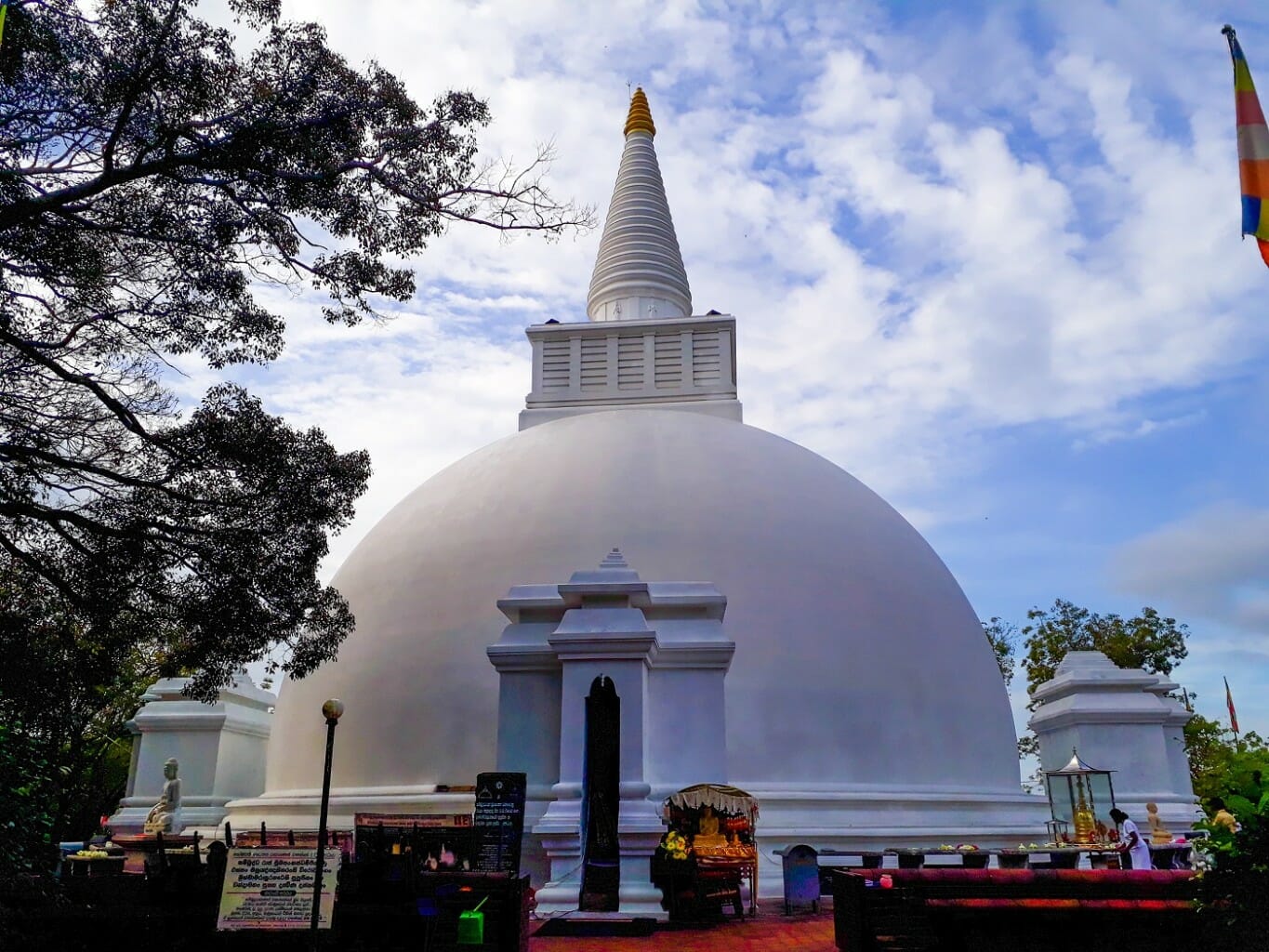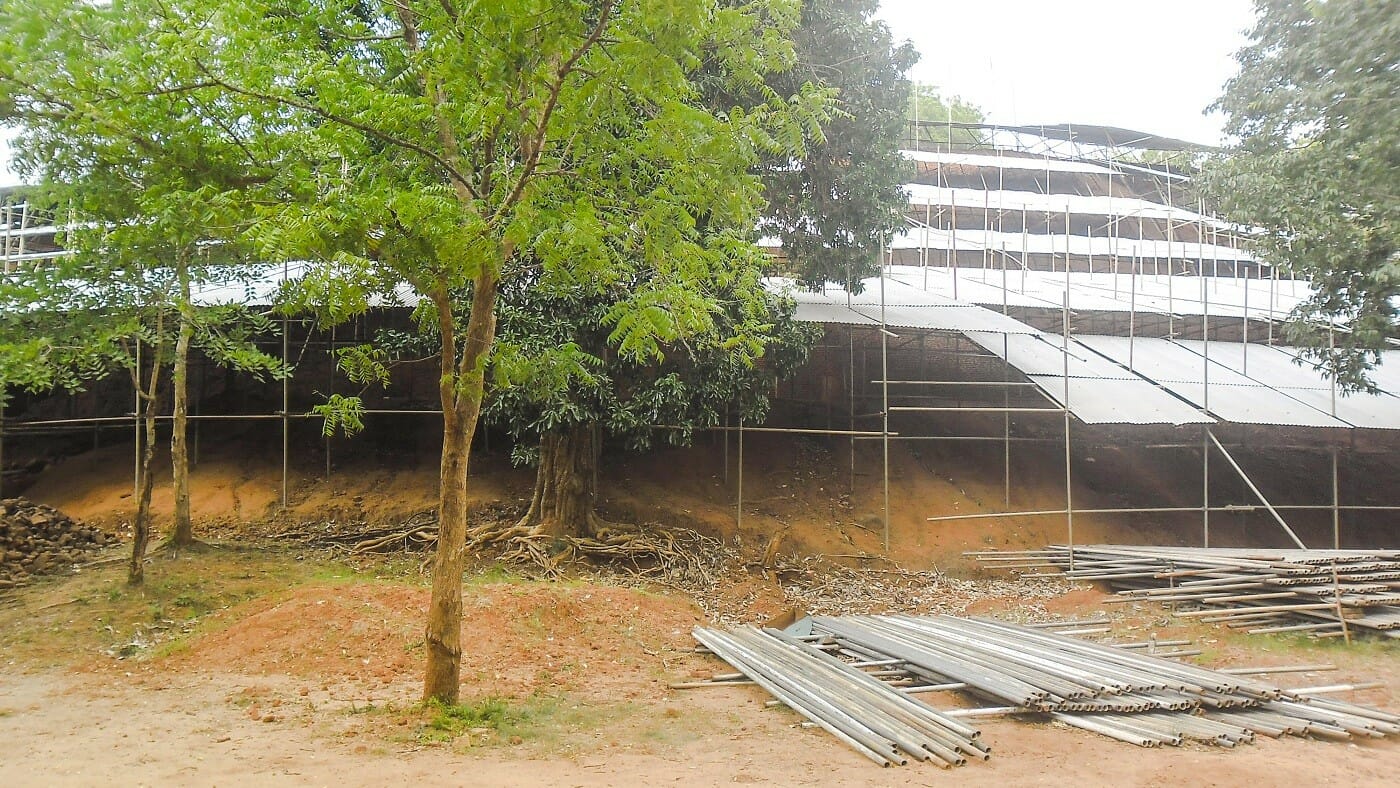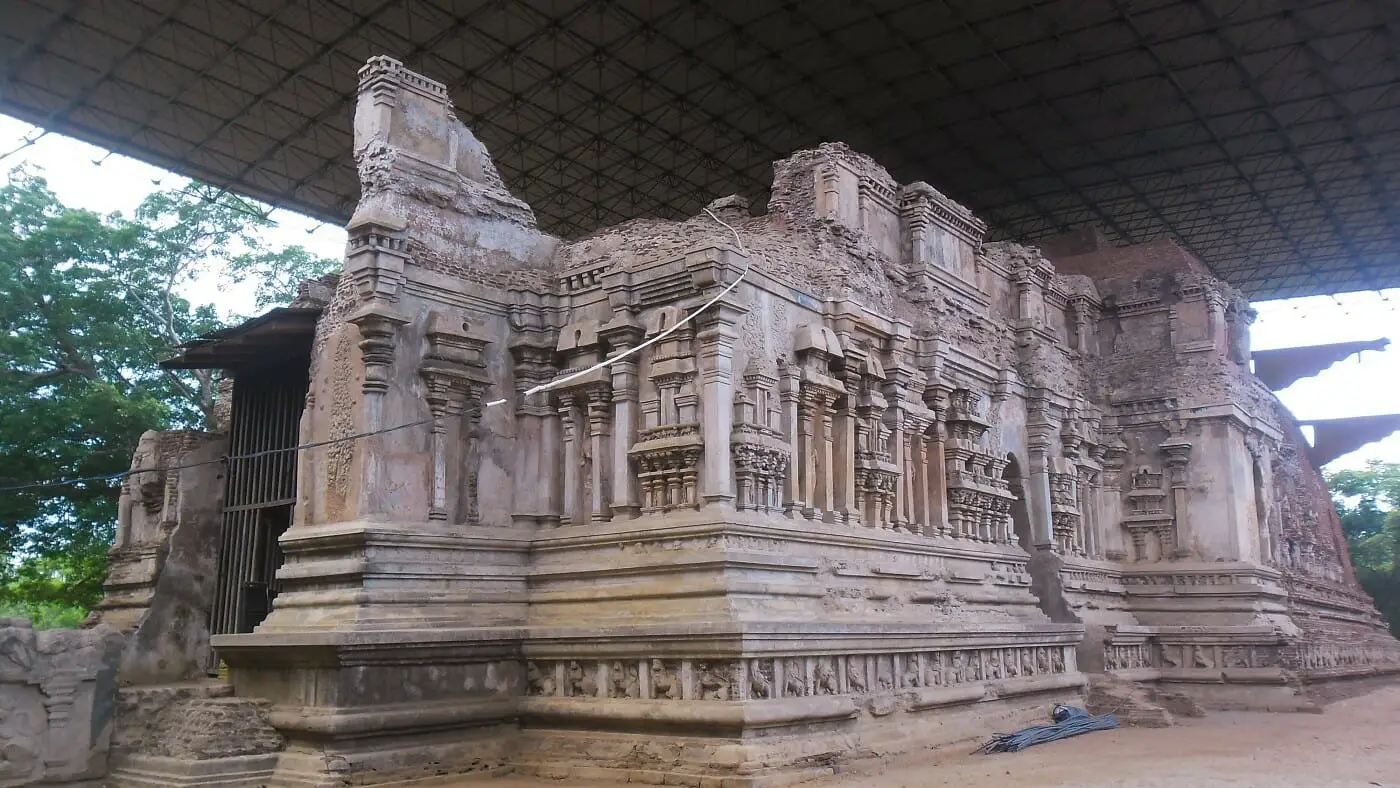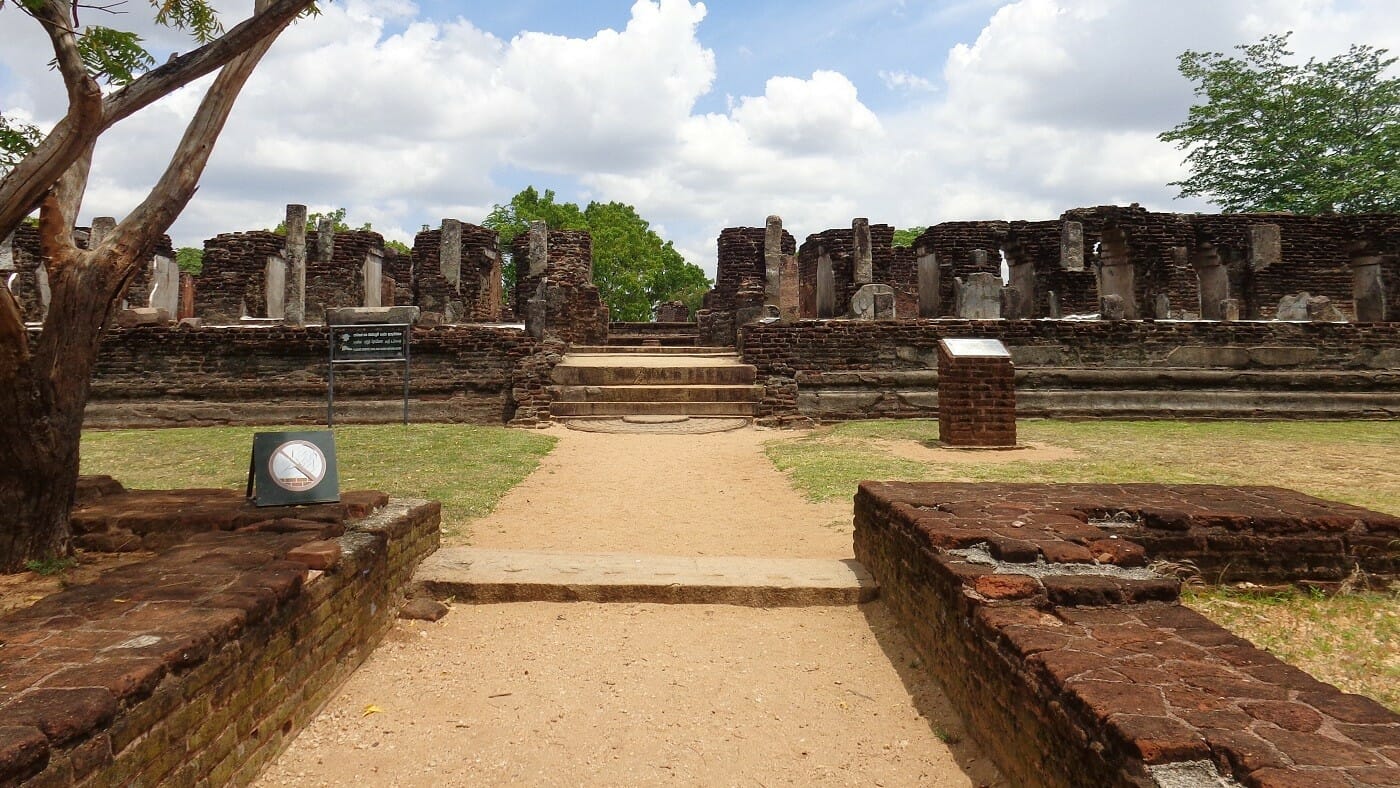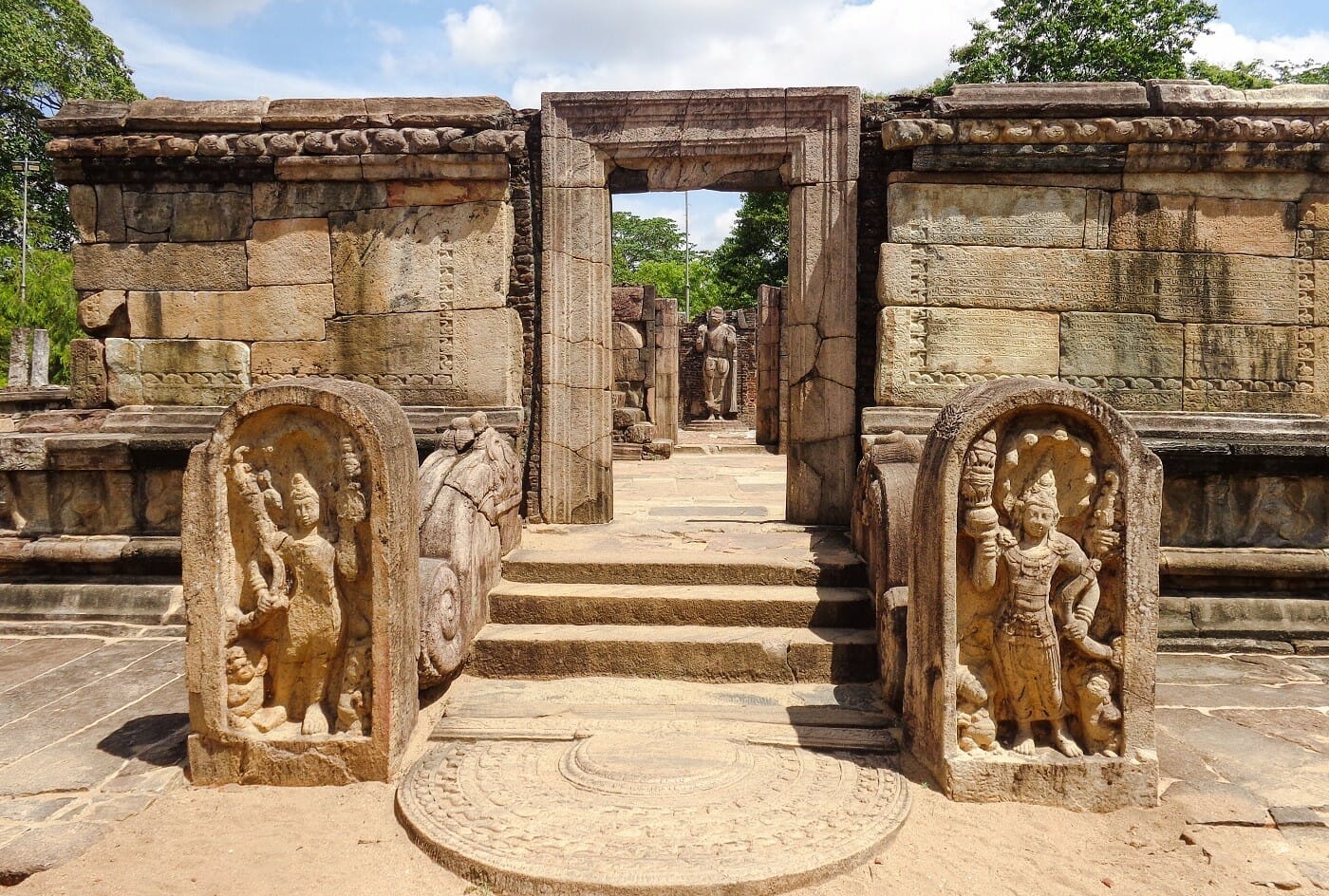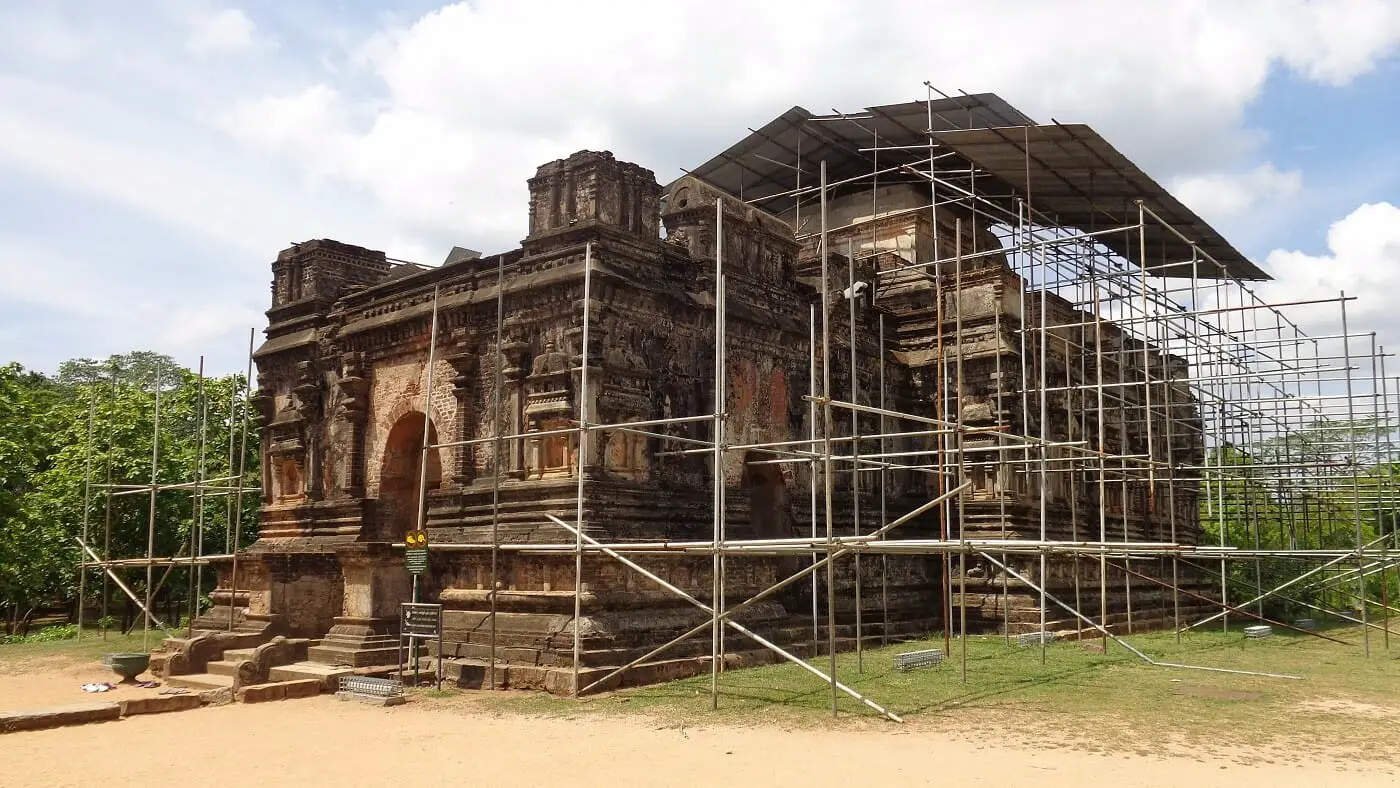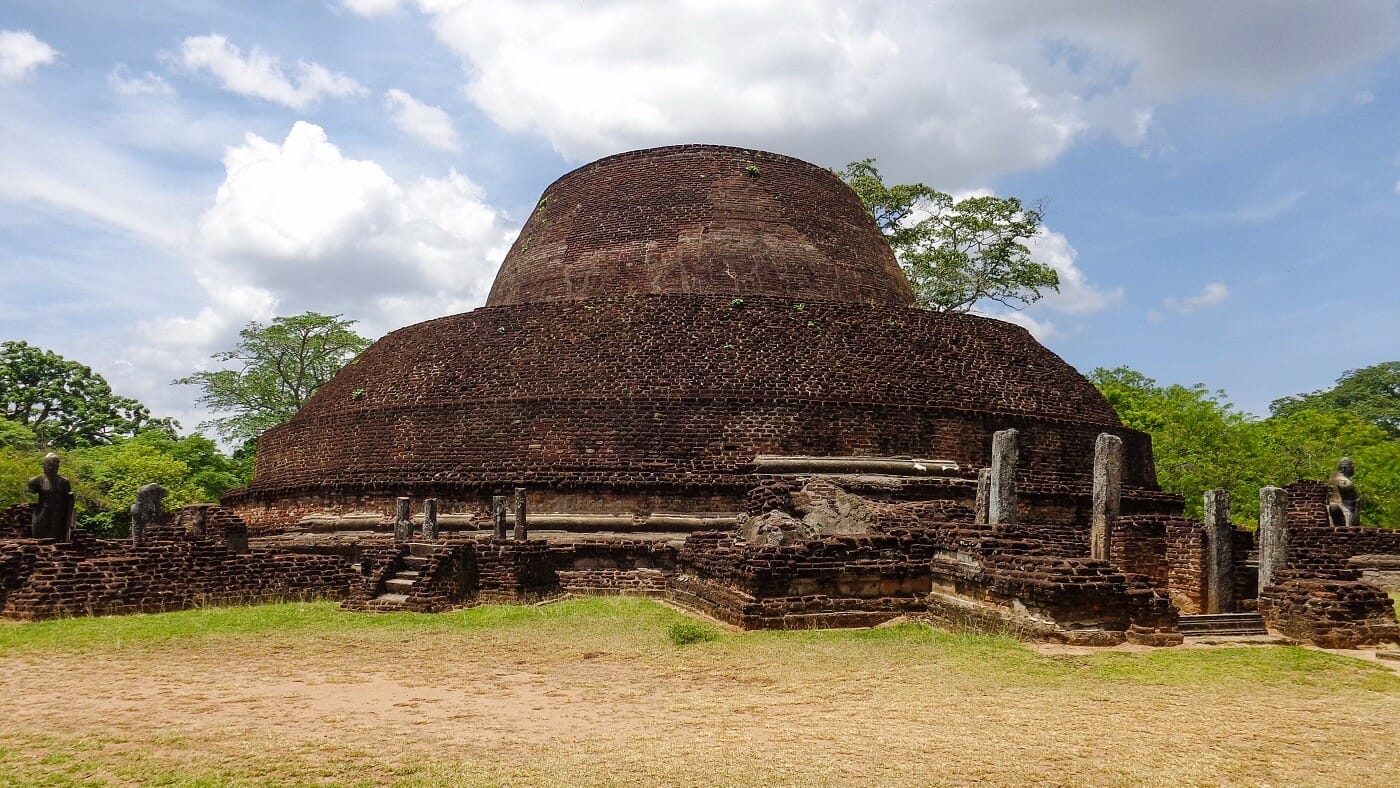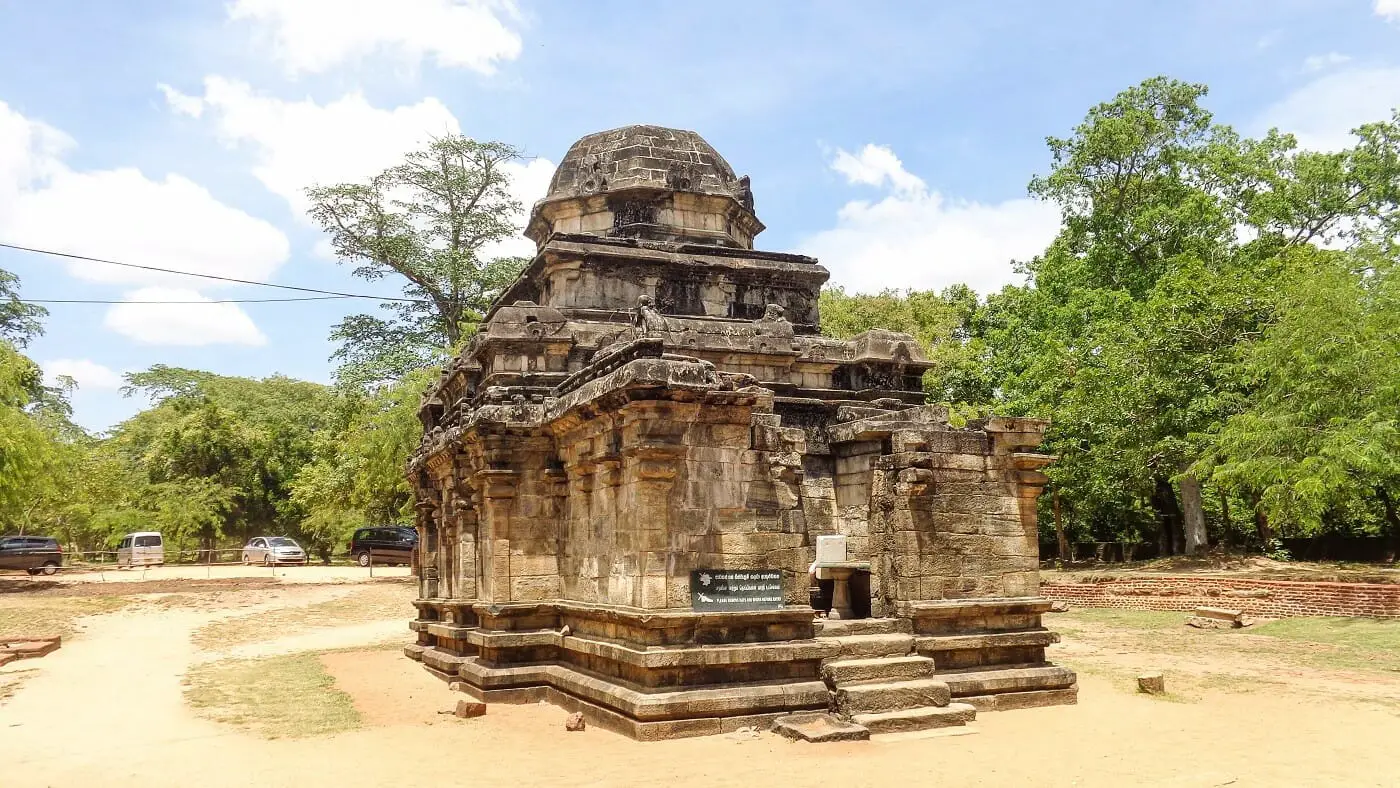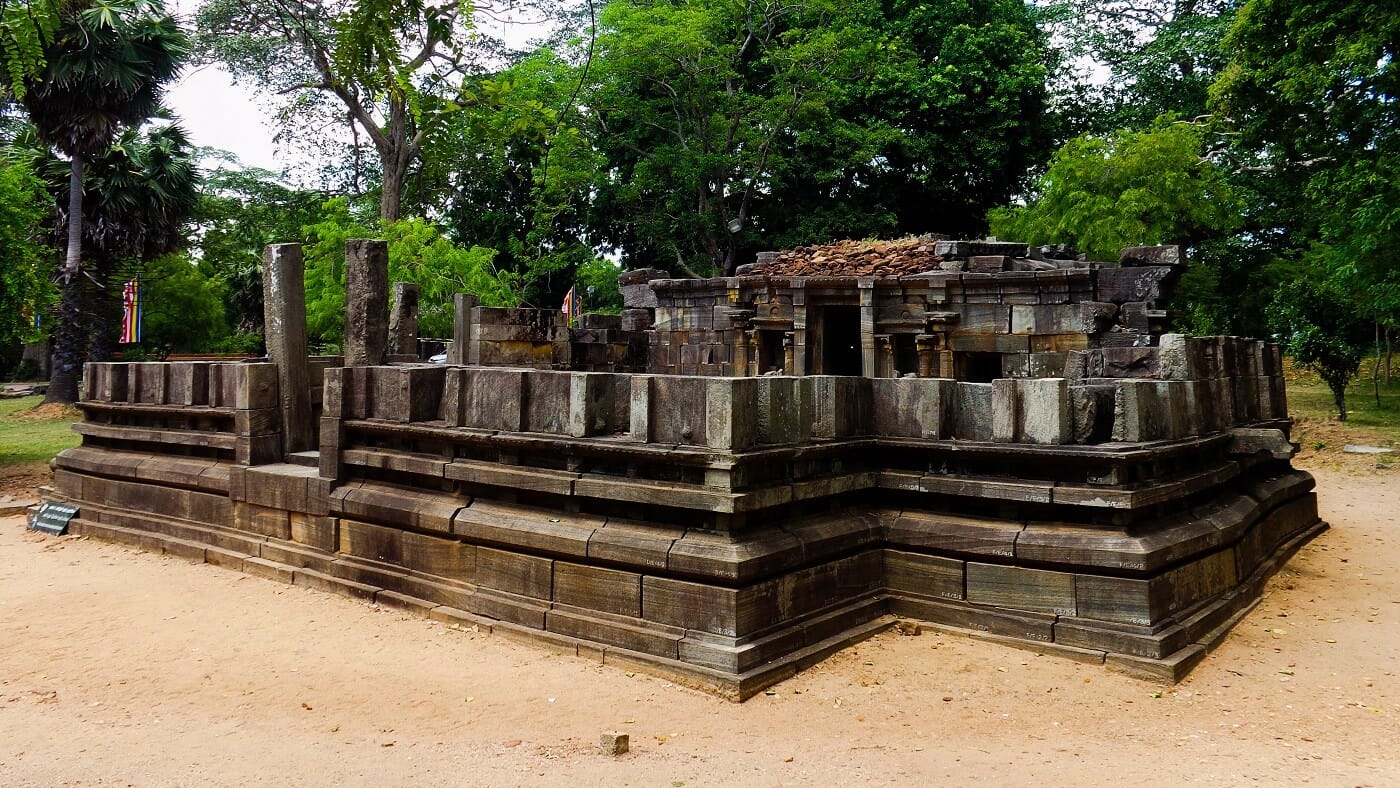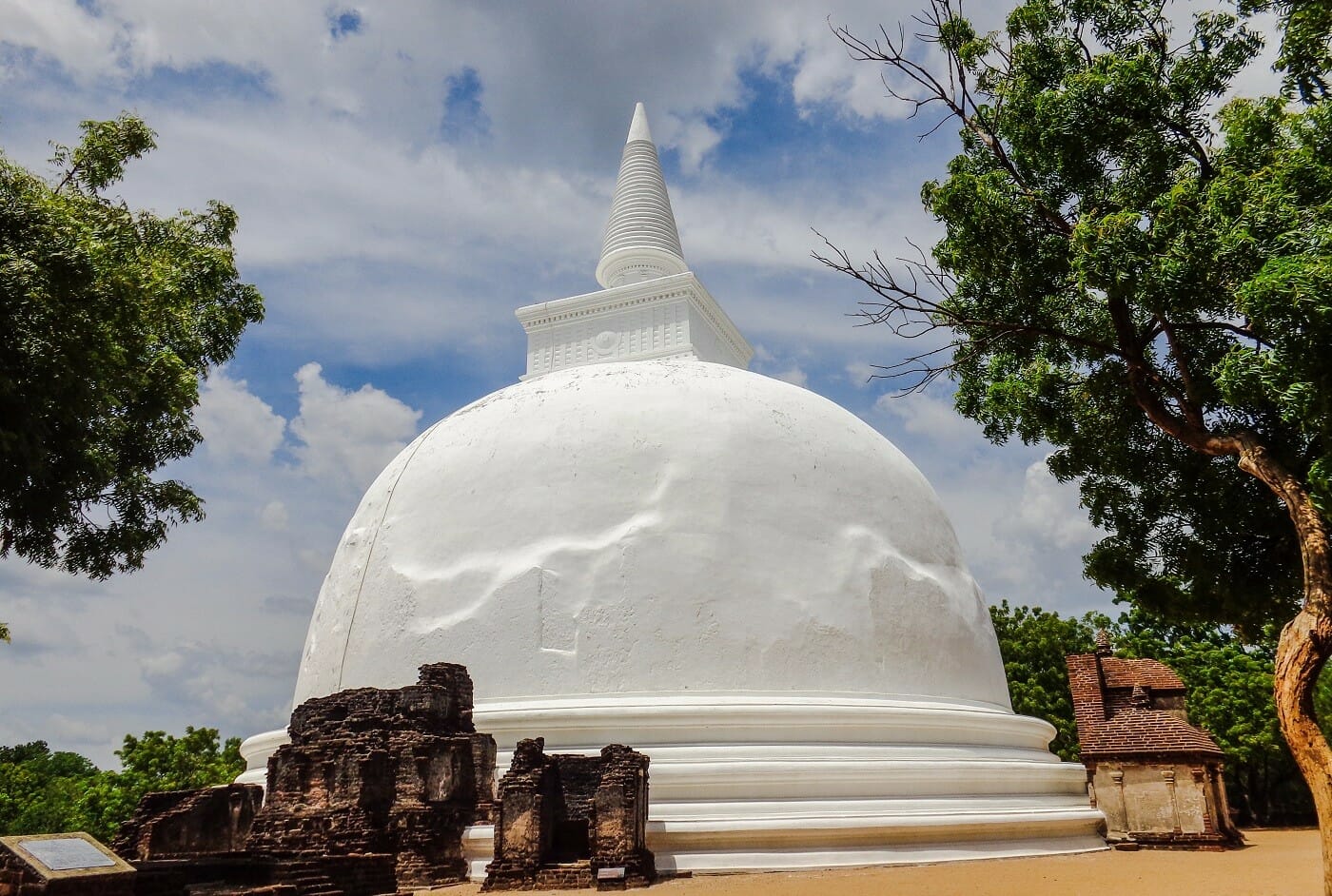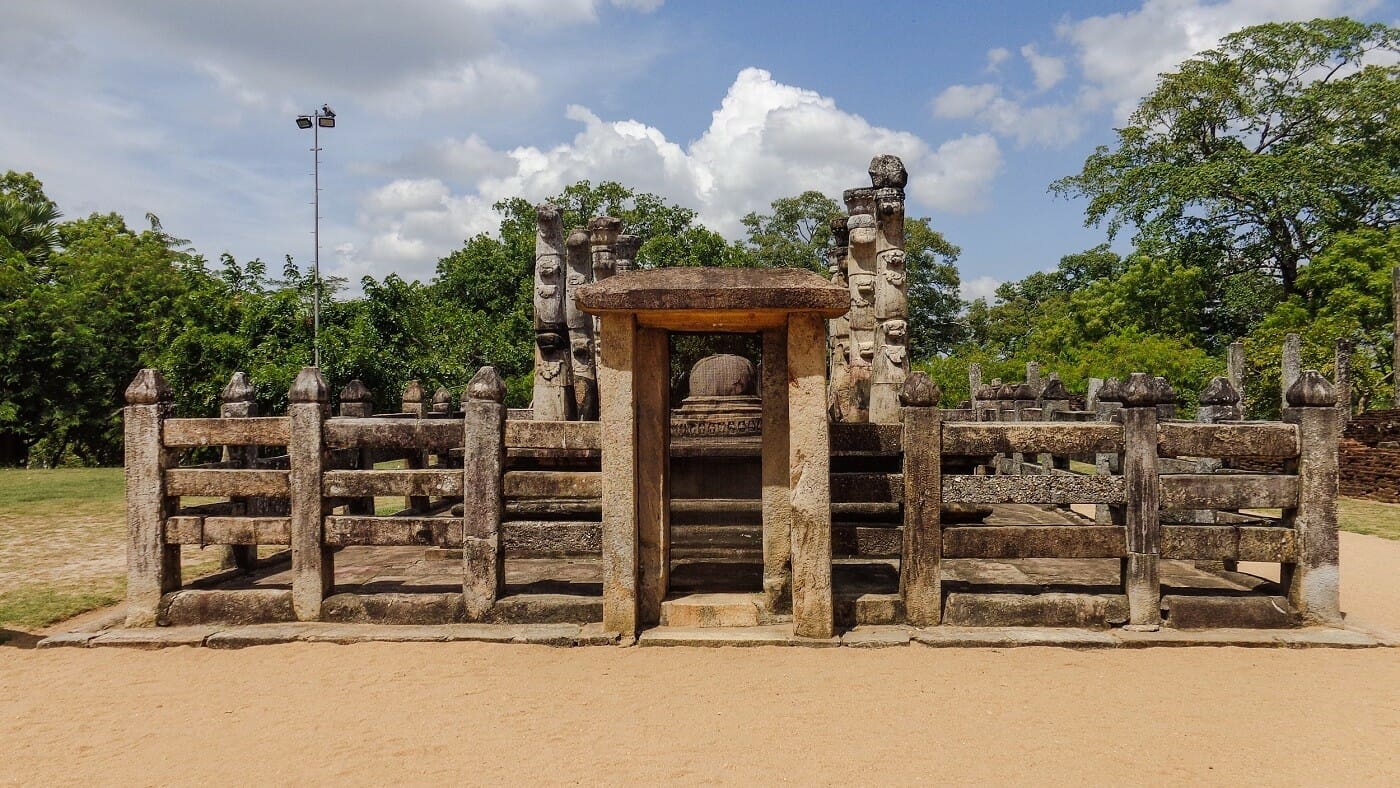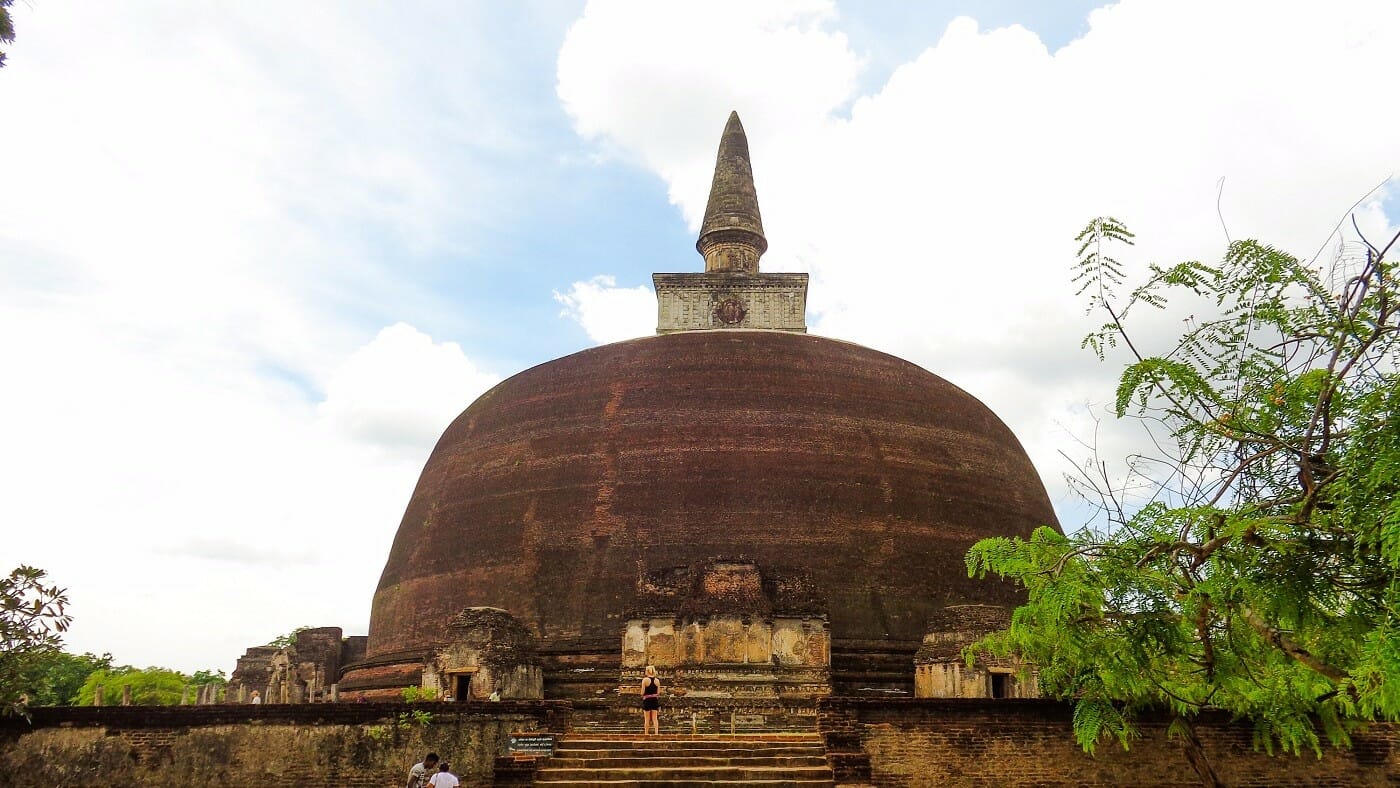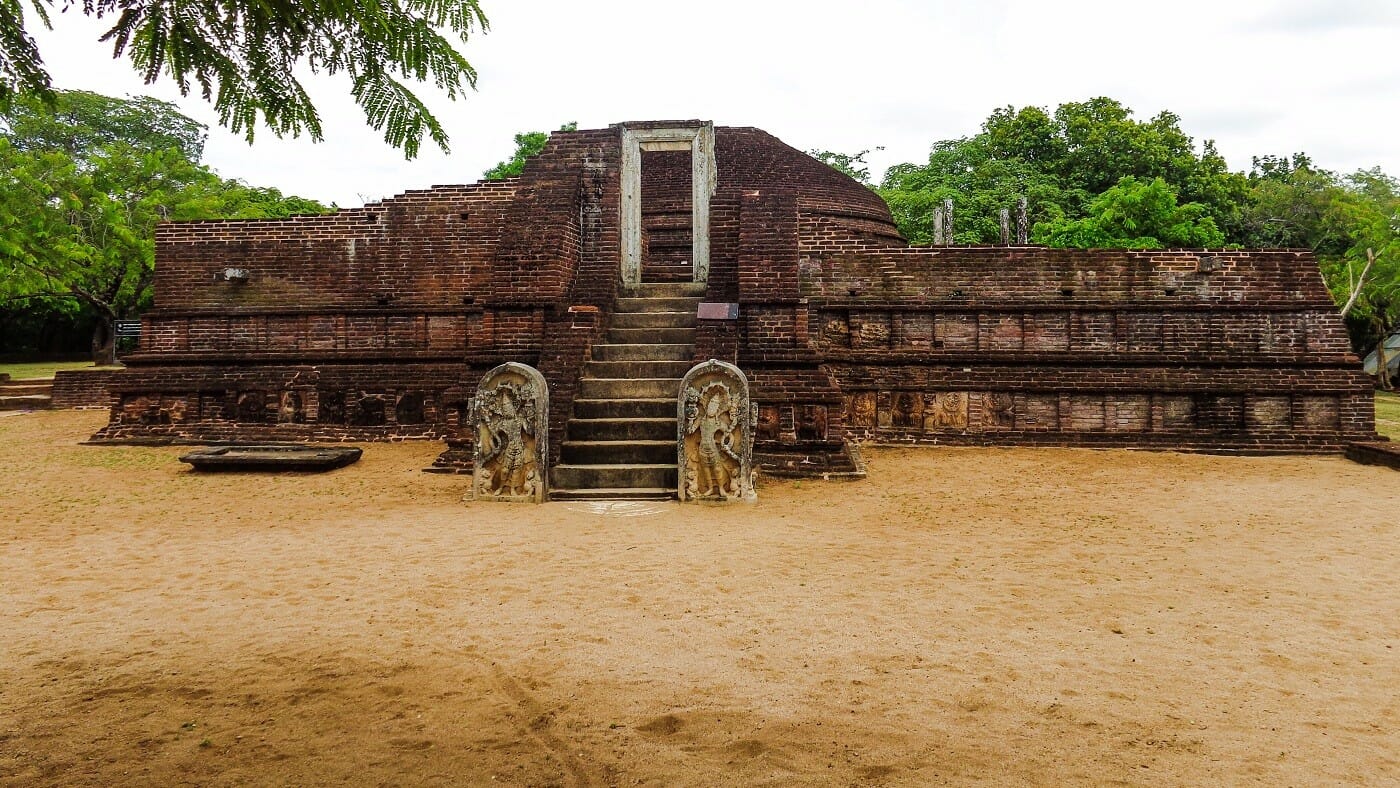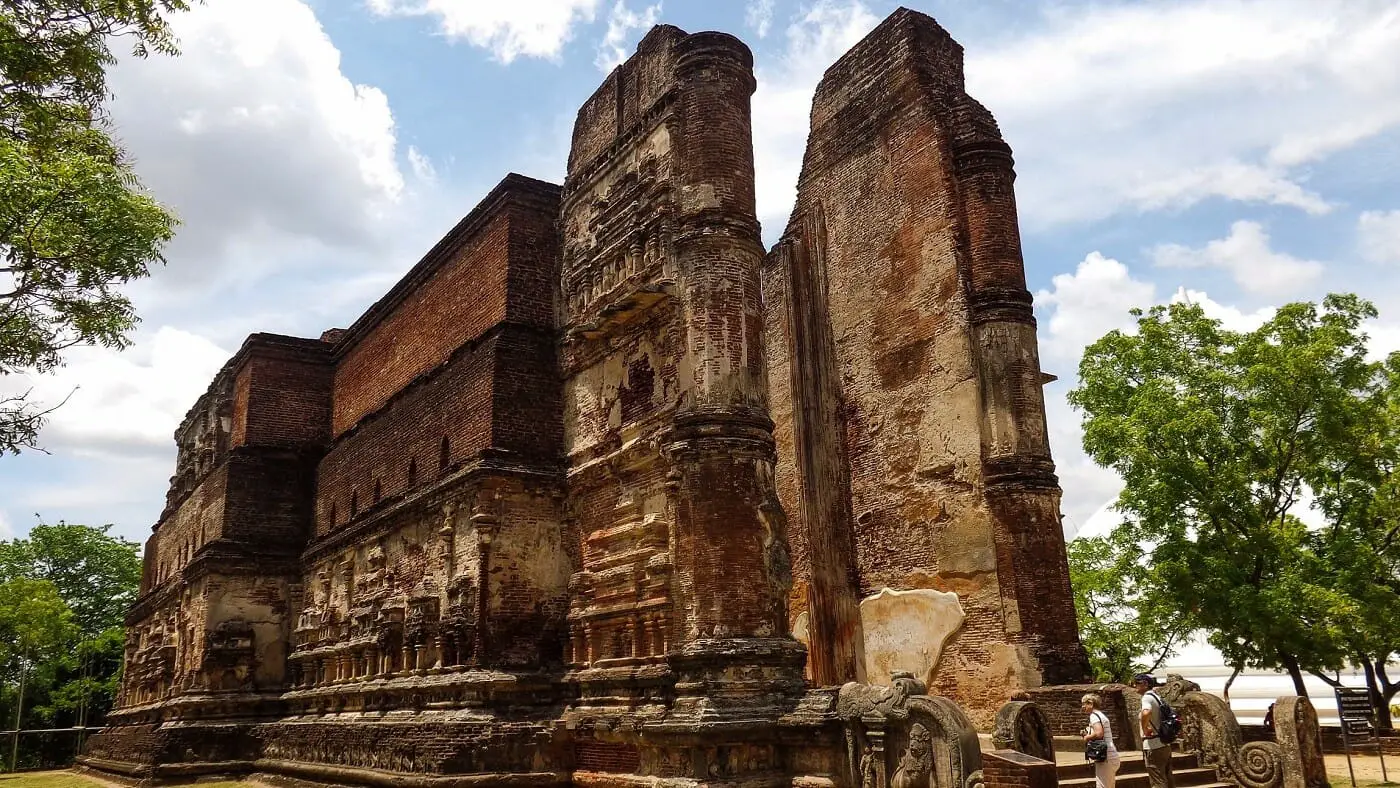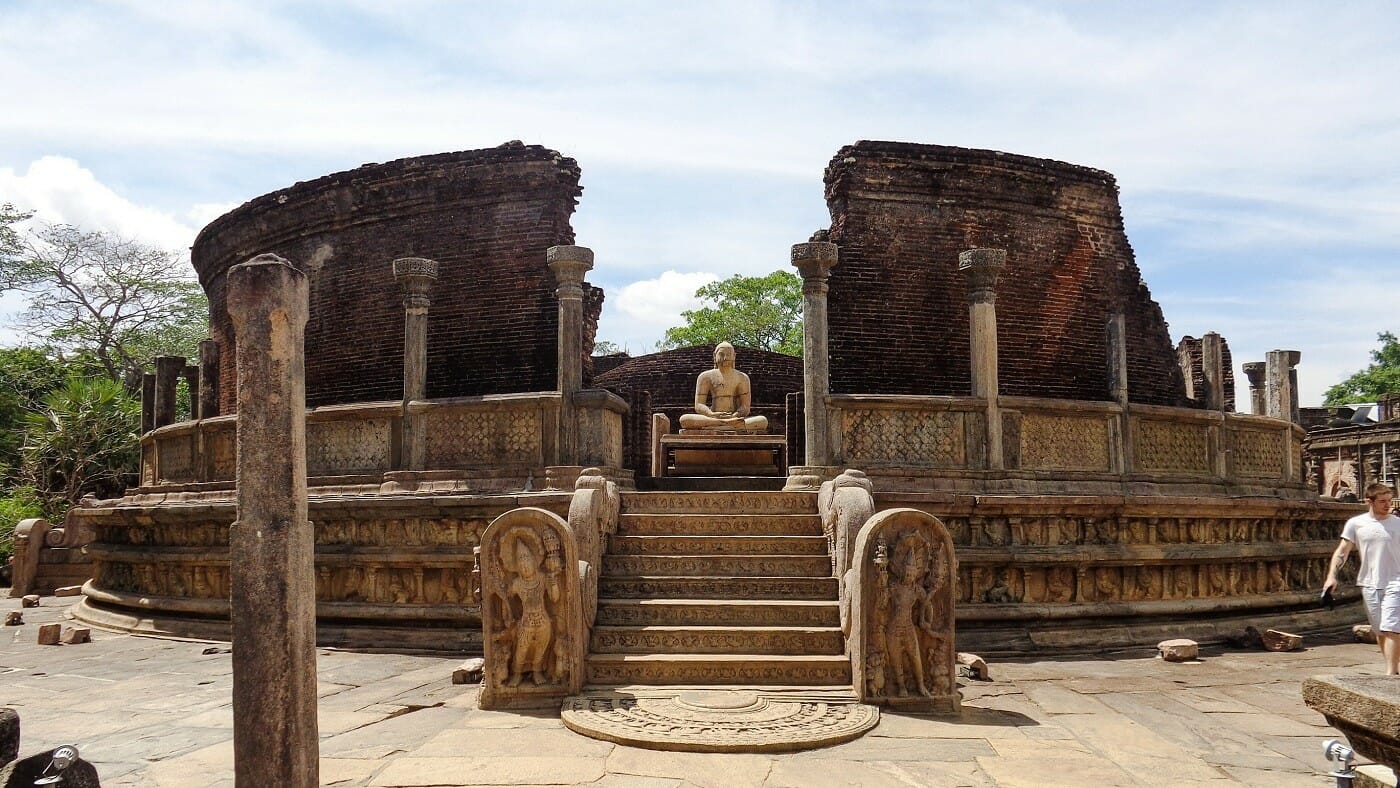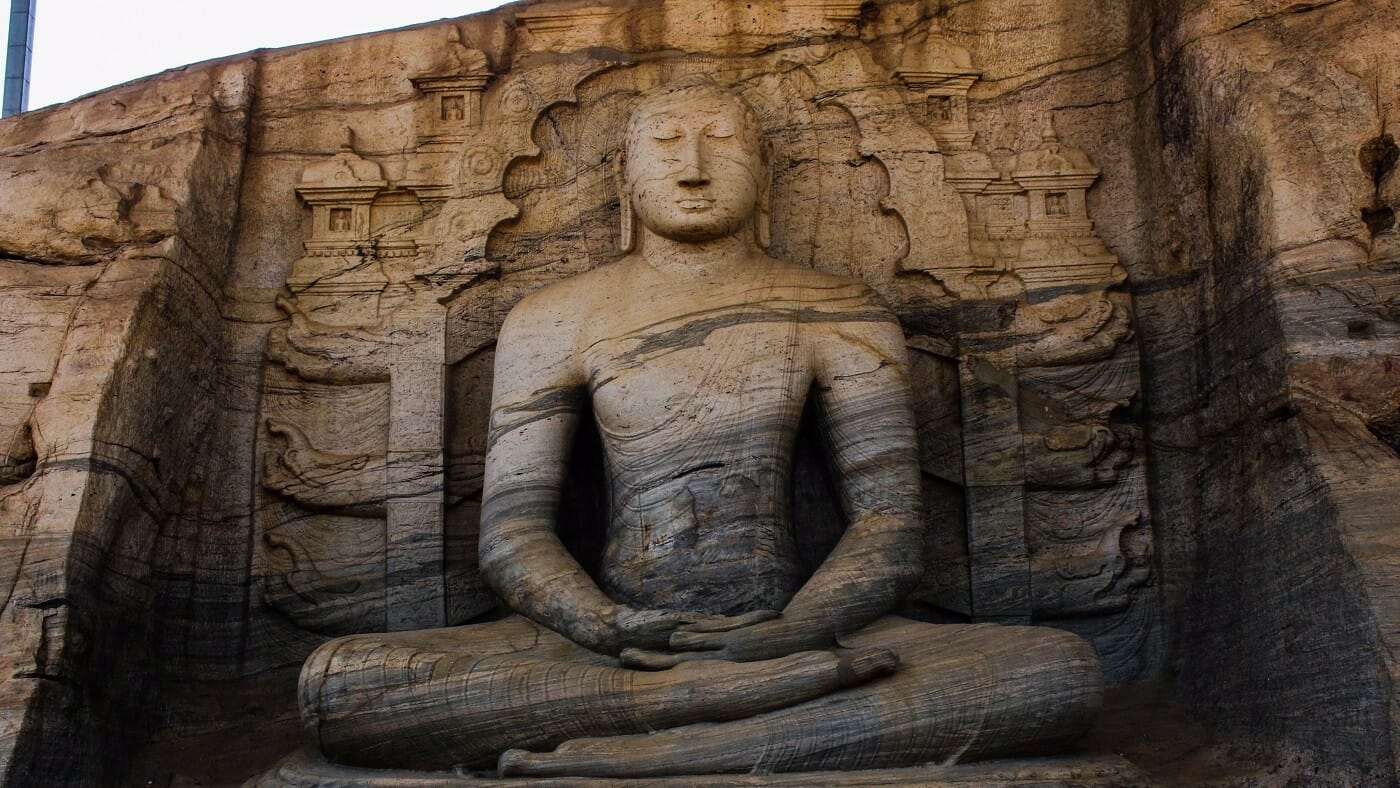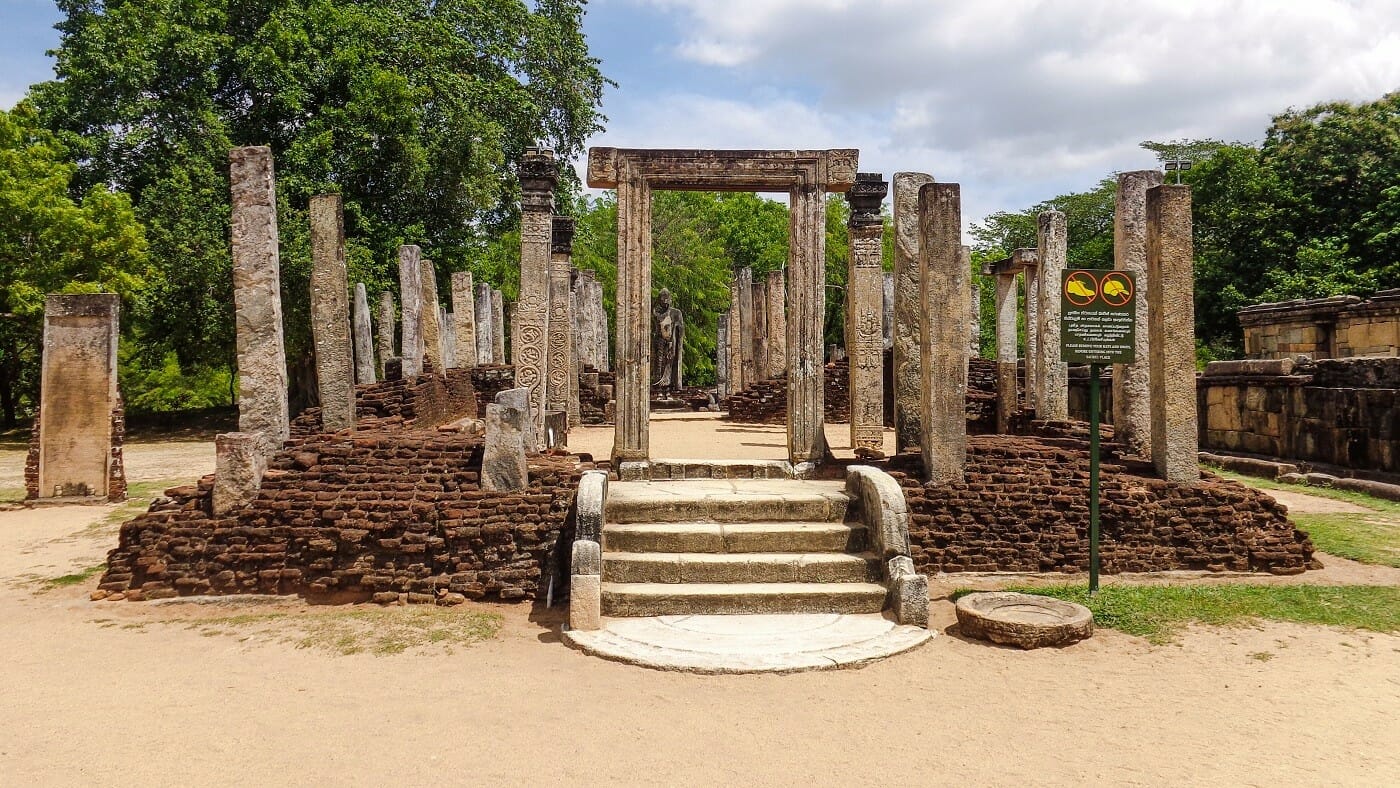Favorite
The Somawathiya Stupa is said to be enshrined the right tooth relic of Lord Buddha. It is located in Somawathiya Rajamaha Vihara premises in Polonnaruwa District of North Central Province. The area in which the temple located belongs to the Somawathiya National Park as well. The stupa was built during the reign of the King Kavanthissa (205–161 BC ) and it was named after his sister called princes Somawathi. Enter your current location in the search box below the map to find the best route to the Somawathiya Stupa. Click here to find a list of accommodations around Polonnaruwa, Sri Lanka. External Read more...
Favorite
Demalamaha Seya is an ancient stupa built by the King Parakramabahu (1153-1186). It is located in the main archaeological site in the Polonnaruwa District of North Central Province, Sri Lanka. As it was described in the ancient chronicle Mahawansa, the stupa named “Demalamaha Seya” was with a height of approximately 1300 cubit (594.36 m). Presently this brick built stupa has a perimeter of 600 m and height of 25.65 m. The excavation and the conservation project of the Demalamaha Seya was commenced by the Central Cultural Fund in 2014. n.b. These photos were taken in October 2017 External Links Bringing back Read more...
Favorite
Tivanka Image House is identified as the image house of Jetavanaramaya Monastery built by the King Parakramabahu the Great (1153 – 1186). It is located in the main archaeological site of Polonnaruwa District in North Central Province, Sri Lanka. The name Tivanka (means three bends) is given due to its giant Buddha image is bent at three places, namely shoulder, hip, and knee. The image house is famous due to the paintings on its interior walls. The paintings belong to the 12th century and they depict certain incidents from Jataka Stories and the life of Buddha. Like Thuparamaya and Lankathilaka, this image Read more...
Favorite
Baddhasima Prasadaya is the Pohoyageya or Uposathagharaya (Chapter House) of the monks of Alahana Piriwena where they rehearsed the codes of discipline (Especially the pati mokka). It is located in Polonnaruwa District of North Central Province, Sri Lanka. The remaining pillars and brick walls suggest that there had been a multi-storied building and according to the Mahavamsa, there had been a twelve storied building. As such, this may be the largest of the Uposathaghara in the Island. The central Platform of the building was to locate the relic casket while four monks seated on the stone pedestal facing the cardinal directions read the code of Read more...
Favorite
Hatadage is an ancient shrine in the Polonnaruwa District of North Central Province, Sri Lanka. It was built by the King Nissanka Malla (1187-1196 A.D.). This had been used to place the sacred tooth relic of Lord Buddha. According to historical sources, the shrine has built in sixty hours. The English translation of the Sinhalese word “Hata” is sixty, represent the duration of the construction period and the word “Dage” has the meaning of “relic shrine”. The remaining features of the building for today, evidence that the shrine was originally a two-story building. The shrine is 120 ft in length Read more...
Favorite
This image house is located in the Dalada Maluwa premises in Polonnaruwa District of North Central Province, Sri Lanka. Although it is known as Thuparama Image House, the ancient name or the builder is not known. The image house is categorized as Gedige type as its walls and the roof is completely built with bricks. This is the only monument among those in Polonnaruwa where the roof is well preserved. A large seat thought to be the base of a giant seated Buddha statue can be seen inside the image house. The ornamentation of the exterior walls shows the influence of the Read more...
Favorite
According to chronicles, the Pabalu Vehera had built by Rupavati, the Queen of Parakramabahu the Great (1153 – 1186 A.C.). It is located in the Ancient City of Polonnaruwa in North Central Province, Sri Lanka. The present name Pabalu (meaning, beads), has given to the stupa because of a large number of beads found in the vicinity of this monastic complex. Around the stupa, there are a number of image houses with statues with different postures. A reclining Buddha statue has been kept in the largest image house. Read more...
Favorite
This Siva Devalaya is the oldest Hindu shrine found in the Ancient City of Polonnaruwa, Sri Lanka. It was built by king Raja Raja I (985 – 1014 A.D.). According to an inscription found, this place has been dedicated to the consort of the King. Read more...
Favorite
This Hindu Shrine is located in the archaeological site of Polonnaruwa, in North Central Province, Sri Lanka. The ancient name or the builder of this shrine is not known. However, according to the style of architecture, this may belong to the 13th century A.D. Read more...
Favorite
This stupa popularly known as Kiri Vehera is located in Polonnaruwa District of North Central Province, Sri Lanka. The stupa is also a part of the archaeological site called Alahana Pirivena. The origin of this stupa not exactly traced yet. However, it is speculated that this was done by Queen Subhadra, a consort of King Parakramabahu the Great (1153-1186). This is the second largest stupa in Polonnaruwa. The lime plaster of the dome is better preserved compared to the most of other stupa found in Polonnaruwa. Probably the present name “Kiri Vehera” also derived due to this preserved lime plaster. Read more...
Favorite
According to the inscriptions found, this pillared structure has identified as the Nissanka Latha Mandapaya. It is located in the place known as Dalada Maluwa in Polonnaruwa District of North Central Province, Sri Lanka. This building was constructed by the King Nissankamalla (1187-1196 A.D.). According to an inscription, this is the place where the King Nissankamalla listened to Pirith Chanting (a recitation or chanting of the word of the Lord Buddha). The building is surrounded by a stone railing and the entrance is also protected by a stone doorway. The stone pillars in this building are a unique design. These pillars are Read more...
Favorite
Rankoth Vehera is the largest stupa in the ancient city of Polonnaruwa and the 4th largest in Sri Lanka. It is about 33m in height and 170m in diameter. It was built by the King Nissanka Malla (1187-1196). This stupa has constructed with the same design as the Ruwanwelisaya in the Sacred City of Anuradhapura. According to a stone inscription found in the vicinity of the stupa, it was initially named as “Ruwanweli Stupa”. However, later it has come to be known as Rankoth Vehera. At each of the fours sides of the stupa, there are ruins of four gateways (“Vahalkada” in Sinhala) Read more...
Favorite
Menik Vehera is an ancient monastery located in Polonnaruwa District of North Central Province, Sri Lanka. The history of this place is not known. However, according to the architectural features, it is assumed to belong to the 8-9 centuries A.D. This monastery consists of a Stupa, image houses, a Bodhi – tree shrine, refectory, monk’s dispensary and cells. The stupa here is of a rare type, which is built on a high terrace surrounded by a high wall. There is a carved stone door-frame at the entrance to the Stupa. This monastery is unnoticed by many of the visitors who Read more...
Favorite
Lankathilaka Vihara is a vaulted type (gedige) image house located in Polonnaruwa District of North Central Province, Sri Lanka. It was built by King Parakramabahu the Great (1153-1186 A.D.). This image house is considered to be the largest image house built in ancient Sri Lanka. There is evidence that the image house has been renovated during the Dambadeniya Period (13th century A.D.). The giant standing Buddha statue, two pylons at the entrance, and the remaining walls signify the extent of it. The building, including the giant Buddha statue, is completely built with clay bricks. According to some chronicles, the building has Read more...
Favorite
Polonnaruwa Vatadage belongs to the Polonnaruwa Kingdom. It is a structure which is built encircling the stupa for protection. It is believed that the structure was built during the reign of King Parakramabahu I (1123–1186) to hold the Sacred Tooth Relic of Lord Buddha. However, this has been renovated during the reign of King Nissanka Malla (1187 – 1196). One of the four Buddha statues on the upper platform This is the most famous Vatadage among the other Vatadage structures found in Sri Lanka. It has two stone platforms and only single entrance is there to access the lower platform. Read more...
Favorite
Gal Viharaya (or Rock Monastery), originally named Uttararamaya is located in the ancient city of Polonnaruwa in North Central Province. It was created during the reign of King Parakramabahu I in the 12th century. The temple is famous due to the four statues of Lord Buddha carved into the face of granite rocks. The four statues included a large statue of seated Buddha, a small statue of seated Buddha, a standing figure of Buddha, and a reclining figure of Buddha. Read more...
Favorite
Atadage was constructed by King Vijayabahu I to place the Sacred Tooth Relic in the 11th century. It is located in Polonnaruwa District of North Central Province, Sri Lanka. The name “Atadage” has the meaning of “house of eight relics”. What remains here today are the foundation and 54 stone pillars. The Tooth Relic has been kept on the upper floor made out of wood on top of these stone pillars. External Links Journey of the Sacred Tooth Relic In Sri Lanka Read more...
